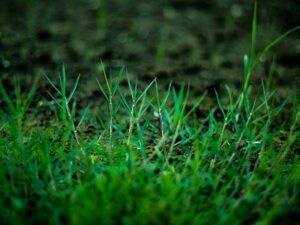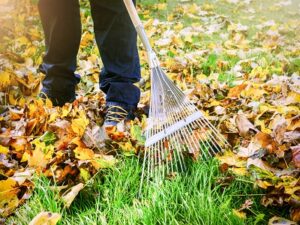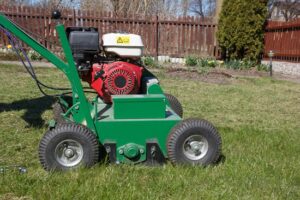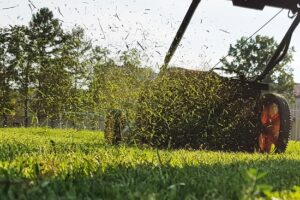 Your location can have a significant impact on how your lawn looks, the types of grass you plant and how much care you need. You will likely have more sunshine and warm temperatures in the South. Southern lawns require extra lawn care and maintenance.
Your location can have a significant impact on how your lawn looks, the types of grass you plant and how much care you need. You will likely have more sunshine and warm temperatures in the South. Southern lawns require extra lawn care and maintenance.
Lawn Care Basics
The South’s Most Common Types Of Grass
Understanding the type of grass that you are growing is the first step in maintaining a green lawn. Each type of grass requires different care. These are the most popular types of grass found in the south:
Bermudagrass is drought-resistant and has a fast bounce back. It can be kept very short and has a medium texture. Your lawn will look its best with deep watering twice a week, proper soil pH, fertilization, and weed control.
Bahiagrass is a fast-growing grass that is resistant to drought. You may have to mow it more often. You should mow once a week to keep it at four inches. Also, you should apply lawn food twice a year. To keep Bahiagrass looking great, use a lawn food that contains iron.
Centipede grass is aggressive against weeds, and doesn’t need to be mowed as often. For this grass to thrive, however, it is important to ensure that your soil is well aerated and low in phosphorus.
Zoysia grass is a deep-rooted grass that resists foot traffic, pests and disease. Keep your grass mowed regularly and keep the soil pH between 5.8 and 7.0.
Are you wondering when lime lawns should be cut in the south? Check the soil for pH changes and apply lime according.
Take care of your southern lawn during winter
Southern lawns have the advantage of not having to contend with heavy snow and ice. Many warm-season grasses turn brown in winter. You can make sure your grass stays green throughout the year by waiting for it to die and then using cold-weather grass like bluegrass or Ryegrass to oversee it.
Southern Lawn Care in Spring
Another lawn maintenance tip is that you can stop fertilizing if you have overseeded during winter and let the permanent grass grow. To improve air circulation and combat early signs of pests, remove any debris. Spring is the best season to apply lime.
Summer Lawn Care in South
Aerate your lawn in the spring to increase oxygen and encourage grass growth. To keep your lawn looking its best during peak summer, water and mow often. Seeding in late summer or early fall is a great time to add lush green.
Southern Lawn Care in the Fall
Experts in lawn care in Myrtle Beach say you can reduce the amount of grass you are mowing six to eight weeks before the first frost. When your grass stops growing, remove dead leaves and stop mowing. Fall is a good time to apply lime. Apply lime to your lawn as necessary.
Do you want a lush, emerald-colored lawn? Even if your lawn is facing strong southern sunlight, we can still help.
Contact Conner’s Lawn Care Service today if you have any questions about lawn care or how to use lime to balance your soil’s pH.
Like our Facebook page for more great info about lawn maintenance.
Conner’s Lawn Care Service
Myrtle Beach, SC
843-504-4901
http://connerslawncare.com/



 You all know that summer is not complete without hot and dry days. Many lawns seem to be prone to burning in the heat. You’ll find a few lawns in your neighborhood that are greener than others. Here are four
You all know that summer is not complete without hot and dry days. Many lawns seem to be prone to burning in the heat. You’ll find a few lawns in your neighborhood that are greener than others. Here are four  Do you have crabgrass on your lawn? It’s not uncommon. This unsightly weed is pervasive and could be taking over your yard right now. Here are some
Do you have crabgrass on your lawn? It’s not uncommon. This unsightly weed is pervasive and could be taking over your yard right now. Here are some  It may be time to aerate your lawn if your lawn shows signs of wear and water isn’t reaching the surface. Here are some
It may be time to aerate your lawn if your lawn shows signs of wear and water isn’t reaching the surface. Here are some  Listed below are some common questions about
Listed below are some common questions about  If your lawn isn’t looking its best, you might think about applying fertilizer. Although this instinct is not always correct, it’s important to remember that details are everything when it comes to
If your lawn isn’t looking its best, you might think about applying fertilizer. Although this instinct is not always correct, it’s important to remember that details are everything when it comes to  Mowing your lawn is one of the most time-consuming
Mowing your lawn is one of the most time-consuming